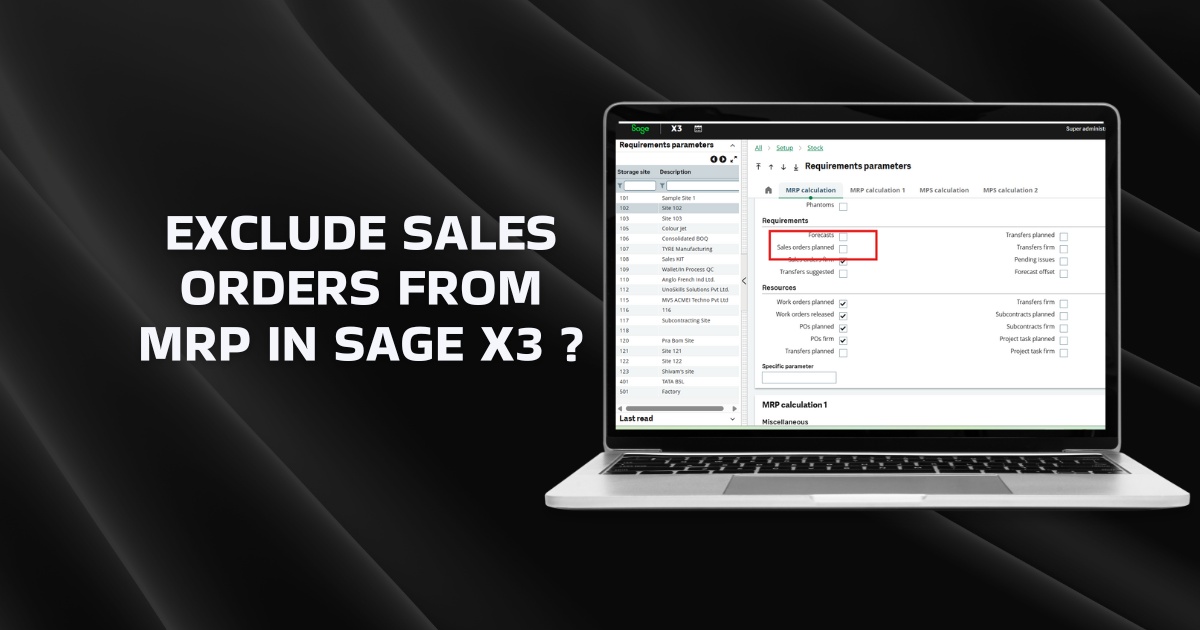What is Finance Reporting and Analysis?
Finance reporting and analysis is the process of documenting every financial transaction of the organization on a quarterly or annual basis to get insights into the company’s financial health & performance, and evaluate its overall profitability & competitiveness.
Financial statements and analysis are the bedrock of a modern company. These reports offer deep insights into a company’s financial KPIs, facilitating evaluation of its performance at different levels. Companies use these reports for strategic decision-making, to raise new investments, and to meet compliance and regulatory needs.
What are the Different Principles in Finance Reporting and Analysis?
Accounting principles are rules and guidelines that govern the accounting system of businesses. These rules make it easier for organizations to standardize their financial statements and analysis and improve comparability. In India, the rules set by the Indian Accounting Standards by the Institute of Chartered Accountants of India (ICAI) govern finance reporting and analysis. Currently, most countries globally recognize three accounting principles: GAAP, IFRS, and GDPR.
1. Generally Accepted Accounting Principles (GAAP)
It is the accounting standard followed by public companies in the USA. The Financial Accounting Standards Board (FASB) set forth the rules of GAAP. Methods of analyzing financial statements following GAAPs ensure accuracy, transparency, and comparability. However, GAAP is primarily used in the USA. Most countries use the International Financial Reporting Standards.
2. International Financial Reporting Standards (IFRS)
IFRS is an internationally accepted accounting standard for finance reporting and analysis developed by the International Accounting Standards Board (IASB). Currently, almost 110 countries follow the International Financial Reporting Standards. It aims to harmonize accounting practices in different countries and simplify international transactions.
3. General Data Protection Regulation (GDPR)
With the changing scenario and rapid digitization of financial transactions, the importance of a solid data protection law has grown manifold. GDPR is a comprehensive data protection law implemented by the EU in 2018 to safeguard individual data privacy and rights. It applies to all organizations collecting, storing, and processing sensitive financial information, insights, and metrics of EU residents.
Critical Statements in Financial Statements and Analysis
Companies prepare a variety of financial documents for enhanced financial statements and analysis. However, a few standard reports are necessitated by the regulators for the interest of the investors, partners, creditors, and other stakeholders.
1. Income Statement
A company’s income statement (also known as a Profit & Loss Statement) accounts for the profit and losses earned for a given period. The statement provides a detailed month-on-month report on income and expenses, allowing decision-makers to identify errors. The income statement allows viewers to analyze the revenues, expenditures, profits, and losses. Income statements help investors, creditors, and stakeholders analyze the company’s profit-making abilities.
2. Balance Sheet
The Balance Sheet contains comprehensive details of a company’s assets, liabilities, and shareholder’s equities for a specific period, typically at the end of a quarter or a financial year. A balance sheet is paramount for investors and creditors to evaluate a company’s financial structure and calculate returns on investments (ROI). If you are an Indian business, your company must publish a balance sheet every quarter, as well as at the end of a financial year.
3. Cash Flow Statement
A cash flow statement is an account of the company’s cash inflow and outflow for a period. Cash inflow is the cash coming inside, whereas cash outflow is the cash going out. The cash flow statement explains how a company manages its cash by listing all the transactions that happen in a business in a period. By analyzing the cash flow report, investors can decide the company’s abilities to generate revenue through its operations, liquidity, and financial flexibility.
4. Statement of Shareholder Equity
The shareholder equity report provides a snapshot of how the company’s equity structure has changed in a financial year. It helps the shareholders understand how the organization’s equity structure has changed due to changes in income or loss, dividend payments, stock repurchases, and issuances. Accordingly, the shareholders can make decisions pertaining to whether to continue investing in the company’s stocks or gradually pull out their investments.
5. Statement of Retained Earnings
The statement of retained earnings showcases how the retained income value of a company has changed over a period. It contains information like the net income or loss, cash dividends, and retained earnings balance. In simple words, the statement of retained earnings indicates the owner’s business model. It helps shareholders determine whether the owner continues to re-invest the revenues into the business or distributes the profits.
Methods of Analyzing Financial Statements
A financial analyst may employ horizontal, vertical, ratio analysis, or a combination of these methods for a complete analysis. Here are the standard methods of analyzing financial statements that depict crucial information to the management about a financial analysis report.
1. Horizontal Analysis
It is a process of comparing a company’s balance sheet for two or more years. In horizontal analysis, the line items are compared horizontally. By comparing the financial information from different periods, the company can efficiently analyze the direction and the volume of changes in its revenue and expenses over the years.
The formula to calculate horizontal line items is the following:
Horizontal line item: {(Comparison year amount – Base year amount) / Base year amount} X 100
2. Vertical Analysis
Vertical analysis of financial statements and analysis allows comparing each report item as a percentage of the total. For example, by expressing the line items of the income statements as a percentage of the sales one can compare how the business profitability changes over time.
Vertical analysis formula:
Vertical items: (Statement line item / Total base figure) X 100
Vertical analysis, when used in conjunction with horizontal analysis, provides a more comprehensive understanding of the financial performance of a business.
3. Ratio Analysis
As the name suggests, ratio analysis allows the comparison of a company’s performance against industry or sector benchmarks. It is often used to compare liquidity, operational efficiency ratios, and profitability. Elements you can find in a ratio analysis report current ratio, gross profit margin ratio, and inventory turnover ratio.
Which Methodology Is Right for Your Business?
There are different methods of analyzing financial statements. As a business owner, if you want to compare the company’s performance against competitors, you should consider the gross profit margin, which indicates a difference between revenue and the cost of goods sold in the income statement. A higher gross profit margin indicates stronger financial performance. Similarly, you should employ horizontal analysis to analyze how the business’s gross profit margin has changed over a period.
Who Uses Financial Analysis Report?
A financial analysis report is one of the key documents for investors, creditors, regulators, financial advisors, and management to measure the performance of a business. Different stakeholders use different types of financial statement analysis to get crucial information.
1. Financial Stakeholders
Investors and shareholders use financial statements and analysis to decide the performance of the business and the profitability of their investments. On the other hand, creditors access reports to estimate the company’s financial stability and cash reserves to pay debts.
2. Management Officials
Company managers access these reports more than anyone else. A financial report generated using ERP implementation sheds light on critical financial KPIs essential for strategic decision-making. These reports aid planning, budgeting, and forecasting for the board and the management.
3. Regulatory Bodies
Businesses of all kinds must pay taxes according to the laws. Government tax agencies, such as Income Tax and Sales Tax departments access information on financial reports to monitor tax compliance.
4. Organizational Employees
Employees perform financial statements and analyses from the perspective of understanding the company’s financial status and how it will impact their bonuses and increments. They would look into the reports for a deep understanding of the business and the current industry situations.
5. Business Competitors
Financial statements and analysis help companies understand the performance of other companies, maintain a competitive edge, and change their strategy. For example, they may adopt the cost-efficient strategies of other companies to reduce manufacturing costs and increase profit margins.
Advantages of Financial Statements and Analysis
Financial statements and analysis reports are critical to your company for the following reasons:
1. Tax Compliance
Income Tax Department sources financial statements to ensure a business is up-to-date in paying taxes. Different types of financial statement analysis, particularly the income statement, provide a complete account of a company’s income, gains, and losses for accurately reporting taxable income. The income statement is also useful for booking losses and claiming tax exemptions.
2. Performance Evaluation
Financial statements, especially income statements, provide details regarding a company’s sales, expenses, profit, and losses for a period. Shareholders, investors, and creditors often access income statements to understand the changes at the operational level to compare past performance and forecast future cash flow.
3. Strategic Planning
Financial statements serve as the cornerstone for effective planning and forecasting. Financial analysis and reports offer crucial insights into revenue streams, cost structures, profit drivers, and cash flow dynamics that are essential inputs for strategic planning, preparing realistic budgets, and making informed business decisions for profit maximization.
4. Mitigate Financial Errors
Financial reporting helps businesses mitigate costly financial errors by ensuring accuracy, transparency, and compliance with accounting standards. Financial statements and analysis make it easier for companies to adhere to regulatory requirements and trace financial anomalies. Through the reconciliation process, companies can easily detect errors in reporting and take action to fix them.
5. Regulatory Compliance
Market regulators, such as the Securities and Exchange Board of India (SEBI), have mandatorily asked all publicly listed companies to release quarterly and annual audited financial reports to maintain transparency in the stock market. It is also a regulatory requirement for IPO-bound businesses to publicize their balance sheets for investors’ consideration.
Disadvantages of Financial Statements and Analysis
Here is a list of the disadvantages of finance reporting and analysis:
1. Technical Complexities
Modern technology is evolving. While businesses are benefiting from it, they also have to cope with rapid technological changes. The process of recording, analyzing, and managing every financial transaction is complex and requires skills. The complex process can increase misunderstanding and miscommunication of information, especially if prepared by non-experts.
2. Lack of Comparability
Differences in methods, accounting policies, and compliance requirements make it difficult to compare financial reports and hinder investors from getting the right insights regarding the financial performance of a business. There is a growing need for investor awareness programs to spread awareness.
3. Scope of Manipulation
Despite laws and regulations safeguarding stockholders’ interests manipulation of financial analysis statements is common. Companies may manipulate the records to portray more favorable financial numbers than actual ones to attract investors.
4. Inconsistent Data Structures
Another disadvantage of finance reporting and analysis is that organizational data is typically scattered across different departments and sources. Besides, the data is stored in different structures and duplicated (whether intentionally or unintentionally). To prepare finance reporting and analysis, the organization needs to build a system of data hygiene and restore it in an organized manner.
5. Data Security Risks
In today’s age of the Internet & technology, cybercriminals are finding new ways to gain unauthorized access to company’s confidential information, and breach customer’s credit card information. Companies may have to deploy expensive technology & tools, use encryption, and take the physical security of servers to mitigate such risks.
Financial Analysis Report Example
Here is a simple financial analysis report sample of company ABC.
| Category | Ratio/ Metric | Value |
| Profitability Analysis: | ||
| Gross Profit Margin | 20.5% | |
| Operating Profit Margin | 14% | |
| Net Profit Margin | 7.2% | |
| Return on Assets (ROA) | 5.6% | |
| Return on Equity (ROE) | 12.8% | |
| Liquidity Analysis: | ||
| Current Ratio | 1.4 | |
| Quick Ratio | 0.9 | |
| Cash Ratio | 0.5 | |
| Solvency Analysis: | ||
| Debt-to-Equity Ratio | 0.8 | |
| Interest Coverage Ratio | 4.5 | |
| Debt Ratio | 0.5 | |
| Efficiency Analysis: | ||
| Inventory Turnover Ratio | 5.2 | |
| Accounts Receivable Turnover Ratio | 8.3 | |
| Days Sales Outstanding (DSO) | 44 Days |
Closing Thoughts
Financial reporting and analysis are critical to gauge the commercial implications of your business decisions and achieve long-term goals. Companies are increasingly using integrated ERP software to streamline various processes through its integrated set of modules and extended capabilities.
Sage X3 is a dynamic solution that automates the process of generating accurate reports and staying compliant with regulatory authorities. It consolidates data from different sources and provides 360-degree visibility into business operations so that decision-makers can adapt to changing market needs and maximize profits.
FAQs
1. What is the Definition of Finance Reporting and Analysis?
Finance reporting and analysis meaning is that it is a planned and thorough process that includes all activities of collecting and tracking a company’s financial data monthly, quarterly, and yearly to meet regulatory compliance requirements and disseminate financial information to shareholders, creditors, and investors.
2. What is the General Ledger All About?
The General Ledger is a financial document that depicts a company’s financial data in the form of debit and credit entries, alongside a validation from the Trial Balance. The General Ledger is considered the foundation of the company’s books of accounts. This is because it contains different types of information such as the company’s assets and liabilities, expenses, equity, and income or revenue, which is required to compile the financial statements.
3. What are APs and ARs in Finance?
Account Payables (APs) are the company’s short-term liabilities, such as interest payments to creditors or vendor payments. A company can improve efficiency in managing AP by implementing a tool for AP automation. Account Receivables (ARs) describe the funds that the company expects to receive from its customers, partners, etc. ARs reflect under the current asset section of a balance sheet. Similarly, a company can automate its process using a tool for AR automation.
4. Which Financial Statements Help Build Trust with External Stakeholders?
There are different financial statements that help companies build trust with external stakeholders. These are the balance sheet, income statement, cash flow statement, and statement of stockholder equity changes. Typically, these statements provide information about the company’s financial health over a period of one year. They play an essential part in building trust with external stakeholders such as shareholders, creditors & regulatory bodies.
5. How Do Financial Ratios Help in the Analysis of a Company’s Performance?
Financial ratios are critical indicators of a company’s financial performance, providing insights into profitability, liquidity, solvency, and efficiency. These ratios facilitate comparisons between the company’s past and recent performances, across companies and sectors. For example, the Operating Profit Ratio helps measure the efficiency of the company in managing its core operational costs.







